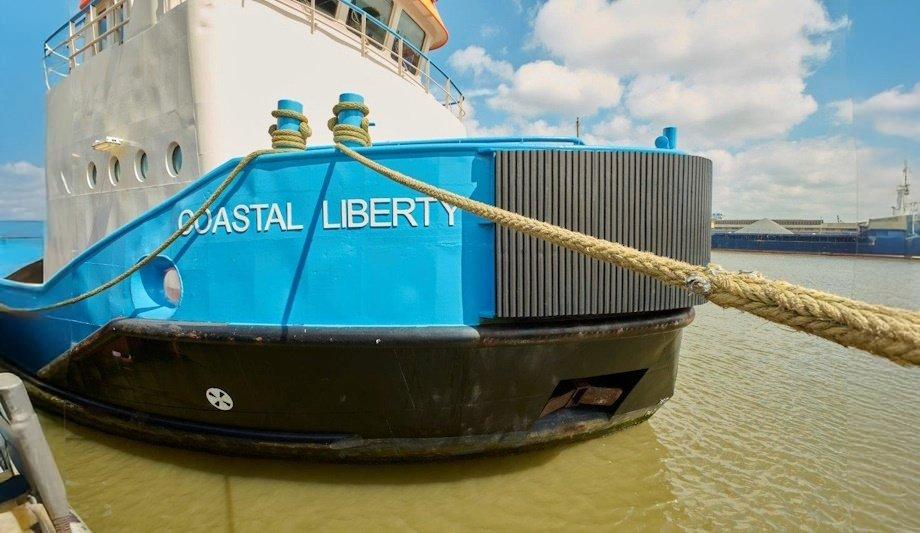In a significant step towards sustainability and emission-free energy sources on board, Offshore Supply Vessel Coastal Liberty has set sail on the waters of the Wadden Sea. With the clear aim of minimising the environmental impact of its activities and driving forward the energy transition, the shipping company has decided to switch to green hydrogen as its main source of energy.
End of February 2024 the refitted OSV received class certification by DNV for its newly installed hydrogen system on board. eCap Marine, contracted by Offshore Service Gesellschaft mbH, engineered the system enabling the vessel to operate without producing any emissions using hydrogen and batteries.
Hydrogen-electric power system
Over two years, eCap Marine developed a containerised system featuring two Ballard FCwave (2x200kW) fuel cells, a maritime battery system from Lehmann Marine, a fire extinguishing system, tank units, a custom power management system, and all necessary cooling and safety equipment.
Lars Ravens, Managing Director of eCap Marine, states that this kind of system is a unique installation on board a seagoing ship and scalable up to megawatt-sized designs for larger commercial ships and longer voyages, as well as smaller inland vessels.
Local hydrogen production
eCap Marine designed the three swappable high-pressure tank systems with a focus on safety
The green hydrogen for the installed fuel cells will be produced locally and sustainably, using offshore wind power on a electrolyser hydrogen plant a few kilometres from the vessel’s berth that was installed simultaneously to the fuel cell project.
The electrolyser is designed to expand in case of higher demands. eCap Marine designed the three swappable high-pressure tank systems with a focus on safety, and in alignment with the rules and regulations resulting to the transport of the units between the vessel and the electrolyser by truck.
Response to the propeller shafts
eCap’s Head of Projects - Frederike Engels confirms that switching, disconnecting and reconnecting the hydrogen tanks is very easy and safe, taking just a few minutes due to the toolless design and standard connections for crane and truck. For the vessel’s crew, the new system means reduced vibrations on board and a more direct propulsion allowing immediate response to the propeller shafts.
Jochen Kaufholt, CEO of Offshore Service Gesellschaft, describes the Coastal Liberty the first of its kind and a flagship for the maritime energy transition in Europe. eCap Marine firmly believes that this investment will not only have a positive impact on the environment, but will also bring long-term benefits for its customers and society as a whole.













